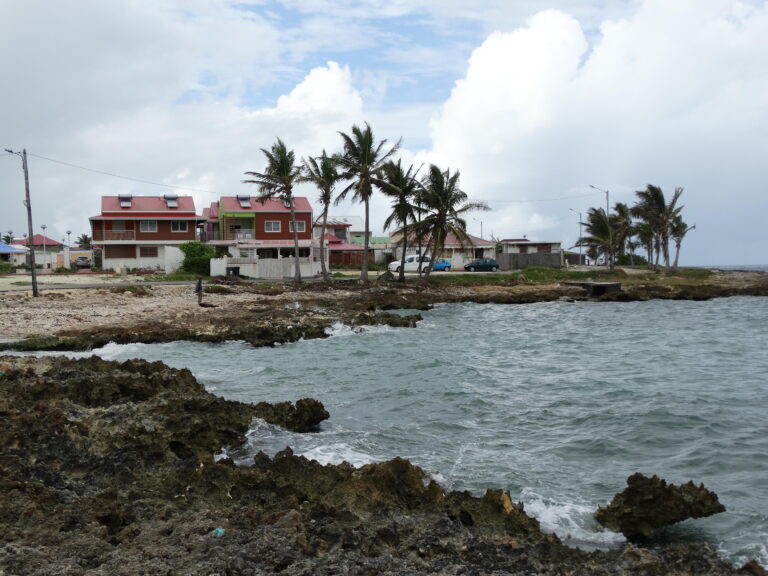The scientific project of ENSA Normandie questions the nature of a school of architecture located in Normandy and its relationship to the world that this territory opens up to it.

Normandy has two strong characteristics:
- an identity recognised worldwide: its agricultural production, its maritime façade linked to the Seine, its history linked to the Second World War;
- immediate proximity to the capital region of Ile de France and the Seine axis, which allows the region to benefit from the expertise and economic dynamics of Greater Paris.
The possibility of better linking the metropolitan area to its hinterland is becoming a strategic issue on several levels, both in terms of natural resources (food, construction) and in the management of low-carbon economies (industry, services, transport).
In view of the geographical, economic, scientific and cultural characteristics of Normandy, we can identify three major orientations for ENSA Normandie:
- the environment ;
- the territory ;
- the architectural heritage.
The environment: agricultural and forestry region
Controlling the landscape and future building resources
Normandy is an agricultural region (70% of the territory and 2 million hectares) where livestock farming and cultivated areas exist side by side, and it is the national leader for the consumption of wood energy supplying industry and individuals locally. It is home to international industries and, above all, the wood industry is characterised by the presence of skills at all stages of the wood processing and recovery chain, from upstream, through primary and secondary processors, to downstream. Normandy's strength lies in its internationally and nationally recognised academic research, made up of several research federations, some of which are accredited by the CNRS, INRAE, IRD or MNHN.
The Region wishes to consolidate its leading position in the development and use of bio-based materials. It has research structures in the field: ESITC research laboratory: efficiency, performance, durability of materials for construction, INTERACT, UniLaSalle, applied inter-disciplinary research (SHS, SdlV, engineering sciences) for the sustainable development of agriculture, agri-food and agro-industry), Normandy Agro-resources and Bio-based Materials Chair - AMBIOS (of which ENSA Normandie is a partner). Normandy is also a traditional territory for wood, earth and straw construction. It has training centres for apprentices and journeymen recognised in these fields. It has also developed a network of actors in this field, involving designers and construction companies (ARPE network).

For its part, ENSA Normandie has developed innovative research and teaching methods on bio- and geo-sourced construction, under the current "Renewable Natural Resources" chair. It can therefore become a leading school in the apprehension of contemporary construction from these new resources by deepening relations with Norman and international partners. This implies building up specific knowledge in the understanding of landscapes and the structuring of materials sectors, in the characterisation of environments and biotopes, and in the structural qualities of plants and rocks. Architecture as an element of biodiversity production can broaden and complete this issue insofar as it aims for a better link between resources and construction.

The territory: coastal and river region
Managing natural and climatic risks in urban development
With 640 km of coastline, Normandy is first and foremost a maritime façade of France, facing the largest maritime highway in the world, the English Channel. It is also the river and land interface with the capital region and the Hanseatic ports. The Seine axis, which links the Île-de-France region to the English Channel by water and land, is an important vector of economic development, making Normandy the leading logistics region in France and Rouen the leading grain exporting port in Europe. All of Normandy's metropolises are fundamentally linked to this geographical situation, and most of the region's population lives along the water. Climate change is a risk factor for the region. In Normandy, according to different scenarios, weather conditions are expected to change, with an increase in heatwave and drought-like temperatures, episodes of heavy precipitation, storms, and a rise in sea level.
ENSA Normandie has been working for several years on territories subject to these natural risks, in Normandy, Guadeloupe and Vietnam. It has recently developed a chair "Living with water" to consolidate these initiatives. It therefore has all the assets to become a major partner in the scientific and educational dynamics of Normandy on the issue of natural risks. It can rely on the partnerships built with the Institut d'Urbanisme de Normandie to expand its training and expertise on an urban scale.
Architectural heritage: industrial and reconstructed region
The control of decarbonation in the re-use of built heritage
Normandy was a major theatre of the Second World War. This singular history, which makes it the second most famous region in the world after California, considerably transformed the urban structures through the bombings followed by the Reconstruction. Evreux, Caen, Rouen, Lisieux, Cherbourg, Le Havre, the main cities were not spared, sometimes razed to the ground by more than 90%. The greatest French architects took part in the Reconstruction. This development drive went hand in hand with the massive industrialisation of the Seine Valley, such as Renault in Sandouville and Airbus in Vernon. Present throughout Normandy, the rebuilt towns suffered from a loss of vitality and attractiveness, which was reflected in the vacancy of housing, shops and services.

20 years ago, ENSA Normandie created a Master's degree in rehabilitation with the University of Le Havre Normandie. With this national recognition, it has all the assets to develop an expertise on the transformation of existing sites with regard to environmental issues. The ability to recycle the existing, from the architectural element to the building block, can constitute a perspective for the development of research and experimentation on an international scale.